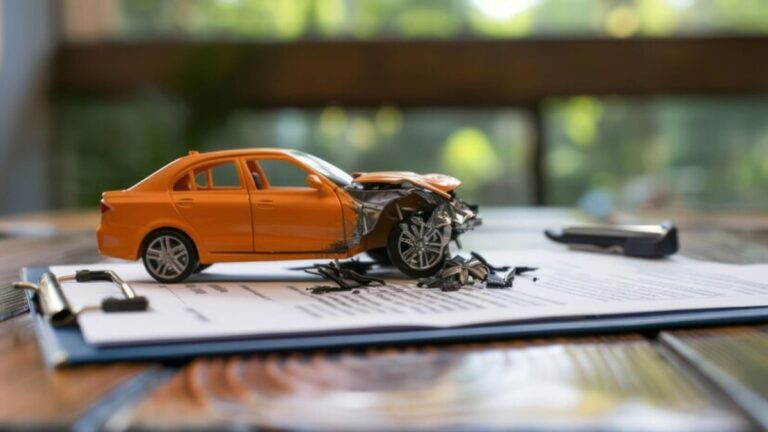Car accidents can be life-altering. They come with physical pain, emotional stress, and financial burdens. Understanding the process is crucial if you’ve been in a car accident and are considering legal action. Seeking help from Albuquerque car accident attorneys can provide valuable guidance. Below, we break down the steps in a car accident lawsuit, from the initial investigation to receiving compensation.
1. Initial Investigation
The first step in a car accident lawsuit is the investigation. This involves gathering all relevant information about the accident. Key elements include:
- Police Reports: A police report provides an official account of the accident, including details on who may be at fault.
- Photos and Videos: Visual evidence from the accident scene can offer invaluable support for your case.
- Witness Statements: Eyewitnesses can provide unbiased accounts of what happened.
Collecting this evidence as soon as possible is critical, as memories can fade, and physical evidence can be lost or altered.
2. Medical Records and Bills
Your health is the most important thing to care for after an accident. Seek medical attention immediately, even if you feel fine. Some injuries manifest later. Medical records and bills serve as crucial evidence, demonstrating your injuries’ extent and associated costs.
- Initial Examination: Document all initial injuries and treatments.
- Follow-Up Treatments: Include records of ongoing treatments and physical or occupational therapy.
3. Hiring a Lawyer
Navigating the complexities of a car accident lawsuit can be daunting. Hiring a specialized personal injury lawyer, such as Albuquerque car accident attorneys, can make a significant difference. They can help you:
- Understand Your Rights: Inform you of your legal rights and options.
- Gather Evidence: Assist in collecting and preserving essential evidence.
- Negotiate Settlements: Deal with insurance companies on your behalf.
A good lawyer will work on a contingency fee basis, meaning they only get paid if you win.
4. Filing the Lawsuit
Once all evidence is gathered, your lawyer will file a complaint in civil court. This document outlines your case, names the defendant (the person you’re suing), and details your claims.
- Complaint: This initiates the lawsuit and includes your claims and the compensation you seek.
- Summons: The defendant receives a summons, notifying them of the lawsuit.
5. Discovery Phase
The discovery phase is where both sides exchange information. This stage can take several months and involves:
- Interrogatories: Written questions that both parties must answer under oath.
- Depositions: Oral statements taken under oath, often used to gather more detailed information.
- Document Requests: Each side can request documents related to the case, like medical records and insurance policies.
6. Expert Testimony
Expert witnesses often play a crucial role in car accident lawsuits. They can provide specialized knowledge that supports your claims. Common experts include:
- Medical Experts: Testify about the extent and impact of your injuries.
- Accident Reconstructionists: Recreate the accident to demonstrate how it occurred and who is at fault.
- Economic Experts: Calculate the financial impact of the accident, including lost wages and future medical expenses.
7. Settlement Negotiations
Most car accident lawsuits are settled out of court. Settlement negotiations can happen at any process stage but often intensify after discovery. Your lawyer will work to negotiate a fair settlement that covers:
- Medical Expenses: Past and future medical bills related to the accident.
- Lost Wages: Compensation for income lost due to the accident.
- Pain and Suffering: Non-economic damages for physical pain and emotional distress.
If a fair settlement is reached, both parties will sign a settlement agreement, closing the case.
8. Trial
The case will go to trial if a settlement cannot be reached. During the trial:
- Opening Statements: Both sides present their arguments.
- Presentation of Evidence: Witnesses testify, and evidence is presented.
- Closing Arguments: Both sides summarize their cases.
- Verdict: The judge or jury renders a decision.
Trials can be lengthy and emotionally draining, but they may be necessary for fair compensation.
9. Receiving Compensation
If you win your case, you will receive compensation. The amount will depend on various factors, including:
- Severity of Injuries: More severe injuries typically result in higher compensation.
- Impact on Quality of Life: How the accident has affected your daily life and future.
- Financial Losses: Extent of medical bills, lost wages, and other financial impacts.
Your lawyer will ensure that any awarded compensation is collected and distributed appropriately.
Conclusion
Understanding the process of a car accident lawsuit can help demystify a stressful and overwhelming situation. From initial investigation to receiving compensation, each step is crucial in ensuring you receive the justice and financial support you deserve.
If you’re considering legal action, consult a specialized car accident and personal injury lawyer to guide you. Their expertise can make navigating these steps much smoother, helping you focus on recovery and moving forward. Ready to take the next step? Contact a reputable firm and start your journey toward justice and compensation.
